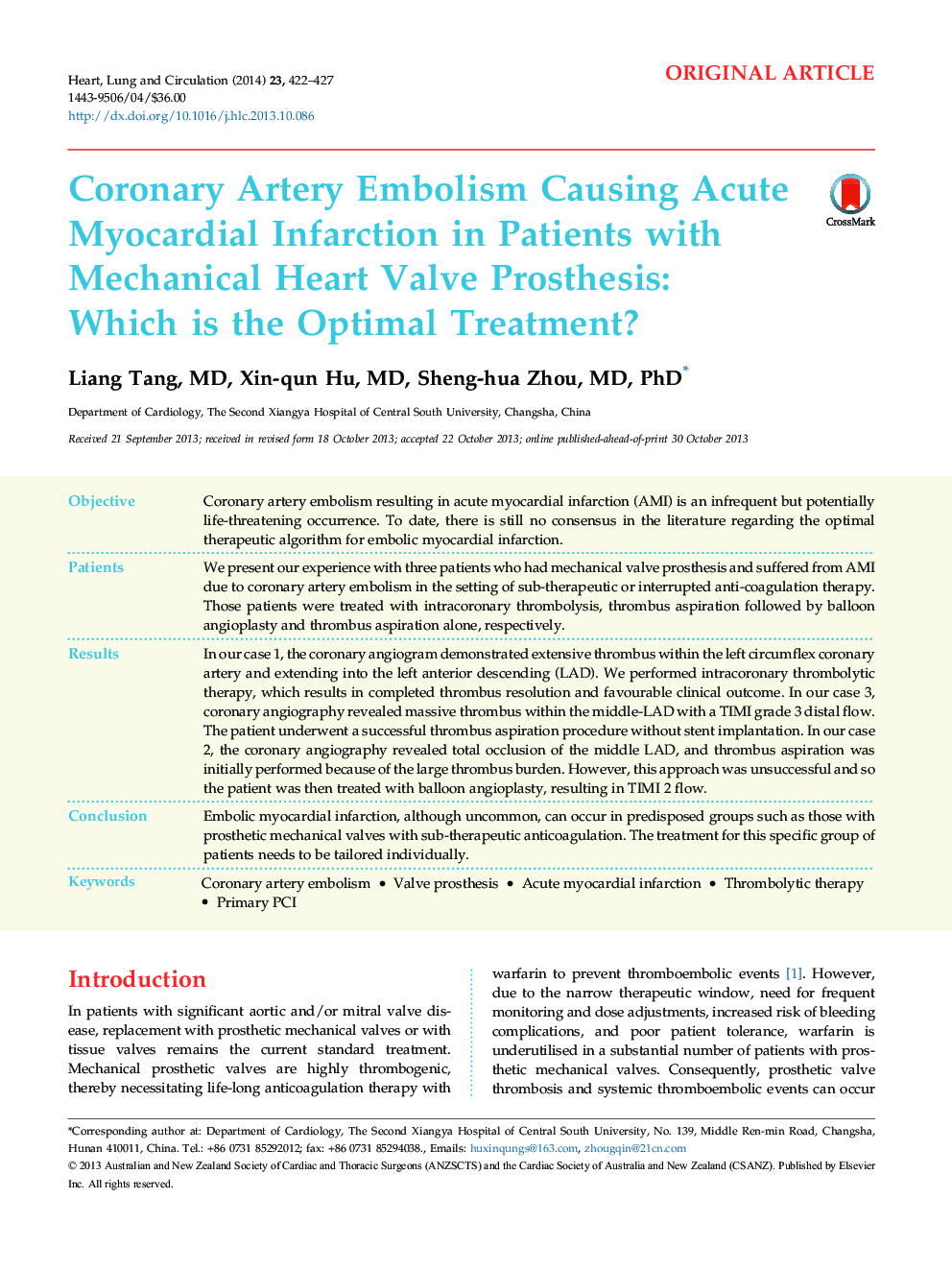| کد مقاله | کد نشریه | سال انتشار | مقاله انگلیسی | نسخه تمام متن |
|---|---|---|---|---|
| 2918215 | 1175688 | 2014 | 6 صفحه PDF | دانلود رایگان |

ObjectiveCoronary artery embolism resulting in acute myocardial infarction (AMI) is an infrequent but potentially life-threatening occurrence. To date, there is still no consensus in the literature regarding the optimal therapeutic algorithm for embolic myocardial infarction.PatientsWe present our experience with three patients who had mechanical valve prosthesis and suffered from AMI due to coronary artery embolism in the setting of sub-therapeutic or interrupted anti-coagulation therapy. Those patients were treated with intracoronary thrombolysis, thrombus aspiration followed by balloon angioplasty and thrombus aspiration alone, respectively.ResultsIn our case 1, the coronary angiogram demonstrated extensive thrombus within the left circumflex coronary artery and extending into the left anterior descending (LAD). We performed intracoronary thrombolytic therapy, which results in completed thrombus resolution and favourable clinical outcome. In our case 3, coronary angiography revealed massive thrombus within the middle-LAD with a TIMI grade 3 distal flow. The patient underwent a successful thrombus aspiration procedure without stent implantation. In our case 2, the coronary angiography revealed total occlusion of the middle LAD, and thrombus aspiration was initially performed because of the large thrombus burden. However, this approach was unsuccessful and so the patient was then treated with balloon angioplasty, resulting in TIMI 2 flow.ConclusionEmbolic myocardial infarction, although uncommon, can occur in predisposed groups such as those with prosthetic mechanical valves with sub-therapeutic anticoagulation. The treatment for this specific group of patients needs to be tailored individually.
Journal: Heart, Lung and Circulation - Volume 23, Issue 5, May 2014, Pages 422–427